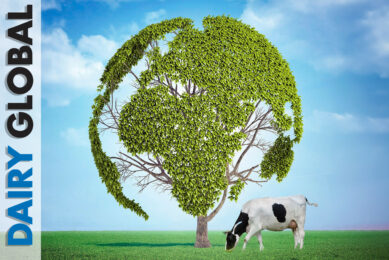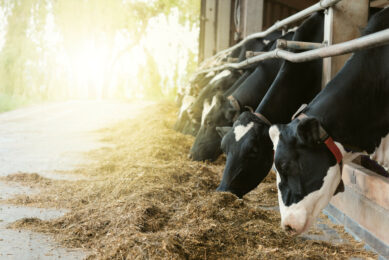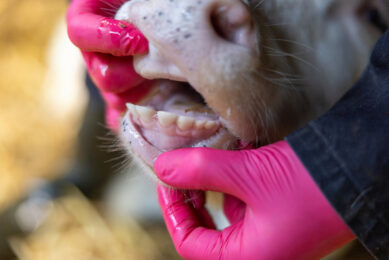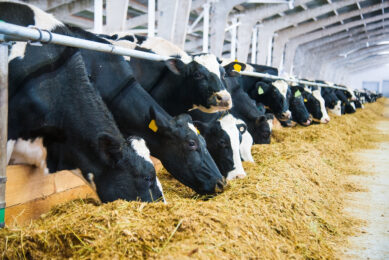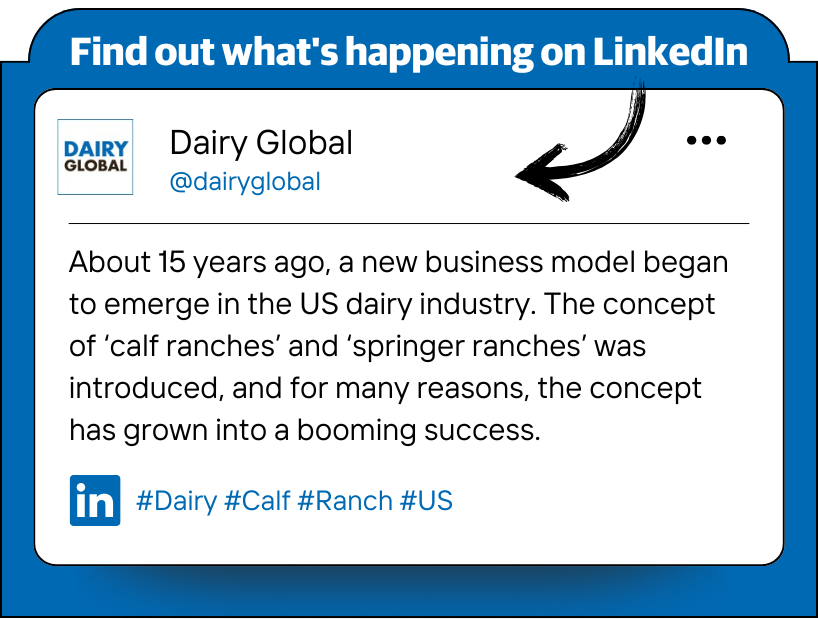Understanding the value of supply chain resilience in the dairy sector

What makes supply chain resilience so important? Is resilience alone enough, and how is it becoming increasingly significant in creating future-ready systems? We caught up with Corinne Bonadei, head of Precision Services, and Silvia Sonneveld, head of the Vitamins Unit at dsm-firmenich Animal Nutrition & Health, to discuss this very topic in detail. From its growing relevance to the challenges posed by global shifts in the livestock sector, these experts share what supply chain resilience means for animal nutrition today and in the future.
Why is there so much focus on a resilient supply chain, and has this changed recently?
Sonneveld: Agri-food supply chain resilience is increasingly relevant due to climate change, geopolitical shifts, and evolving consumer expectations. These challenges expose the limitations of traditional supply chain models and highlight the need for transparent, adaptive, and future-ready systems.
Resilience is becoming a strategic necessity. Over 70% of the global vitamin supply comes from China. The example of rare earth minerals illustrates how such a concentrated supply of essential products without scalable alternatives could result in serious shortages and disruptions.
What are some of the major consequences if resilience here doesn’t measure up?
Sonneveld: When resilience falls short, the ripple effects are significant, both commercially and socially.
Recent events in vitamin E and A have exposed how supply disruptions can lead to price peaks in essential micronutrients. Luckily, the alternative supply sources in Europe and China could, with some effort, still serve the market demand. If a supply disruption from the supply of folic acid or B1 from China would occur, the supply alternatives will not be enough to meet demand. Offering a global vitamin production network provides resilience for customers that are deliberate about reliability of supply. Without a strategic anchor, feed companies and animal farmers risk losing access to essential feed inputs and with that jeopardise animal health, productivity, and with inflationary pressures pushing up consumer prices, ultimately they undermine food security.
There is already some level of transparency in the industry and in supply chains. How can we build on this?
Bonadei: The industry should further leverage advanced technology and digital tools that offer reliable insights. Precision services such as lifecycle assessments to calculate the sustainability footprint and integrated management platforms can improve operational farm and animal efficiency. This transparency empowers producers to optimise resource use such as feed, increase the health of animals and reduce emissions to meet evolving sustainability standards.
Building transparency involves deepening the use of technology and cooperation. This ensures that food systems are verifiably sustainable and resilient.
When resilience falls short, the ripple effects are significant, both commercially and socially.”
Which changes in the industry are driving the need for increased transparency?
Bonadei: Transparency in agriculture is driven by a combination of factors, from consumer demand for ethical, safe, and sustainable food to regulatory pressures and the need to trace complex global supply chains.
To meet these demands, the adoption of digital innovation enables real-time data analytics that support better decision-making through simple, actionable insights – anticipating risks, flagging vulnerabilities, and recommending alternatives. In turn, this drives the need for enhanced transparency, helping to build trust, support compliance, and ensure accountability across the industry.
How do micronutrients fit the bigger picture of sustainability and resilience?
Sonneveld: Micronutrients including vitamins A, B3, D, E and beta-carotene are essential in modern dairy systems, ensuring the dairy productivity that we have today. Vitamin supplementation is essential to maintain animal health and support reproduction and fertility. Certain vitamins also enhance the quality and shelf life of final products, reducing food waste. Ensuring reliable access to high-quality micronutrients helps maintain continuity in food supply chains and food security.
Should there be more focus on micronutrients in livestock?
Sonneveld: Vitamins play a key role in supporting food security. Over 90% of production capacity for certain vitamins is in China. As an industry and as a society, we need to pay attention to how we can ensure a resilient supply of micronutrients. We are pleased with the efforts of the feed associations in Europe and the US to put this on the agenda, together with a dialogue on how to secure supply resilience in an economically acceptable way.
Future-proofing animal nutrition means ensuring that livestock receive precisely the essential micronutrients they need…”
From poultry and pigs to dairy cows – what does it mean to future-proof animal nutrition?
Bonadei: Future-proofing animal nutrition means ensuring that livestock receive precisely the essential micronutrients they need to support their health, immunity, fertility, and growth at the right time and in the right amount. Predictive analytics through digital platforms represent the next evolution in how we optimise health and nutrition plans, anticipate risks and improve decision-making.
Equally important is keeping sustainability at the forefront. Scalable lifecycle assessments serve to measure and reduce the environmental footprint of feed and food. Future-proofing enhances productivity and product quality.
Should we do more in the livestock sector?
Bonadei: The livestock sector has a tremendous opportunity to adopt and advance digital innovation with precision animal nutrition, amplified through real-time monitoring and data-driven decision-making, e.g., software, connected weighting scales, weather data, cameras and irrigation systems.
Improving transparency and traceability throughout the supply chain is crucial for building consumer trust and managing potential disruptions while reducing environmental footprints. Meanwhile, enhancing resilience by diversifying supply sources and leveraging data analytics to anticipate risks will ensure the sector remains productive and adaptable, helping meet food demand while protecting the planet and animal health. Digital transformation in the animal farming industry as well as its supply chain is key to progress and deliver efficiencies.
How can the sector guard against the widespread impacts of volatility?
Sonneveld: There is price volatility at steps along the value chain, typically caused by disruptive changes in supply, rather than in demand. Volatility for vitamins is often caused by production accidents, resulting in sudden supply reductions. A similar scenario could occur if supply from one country of origin gets blocked. Safeguarding against vitamin supply disruption entails having safety stocks and a strategic industrial approach with supply alternatives in place.
An ideal agri-food system requires robust, diversified supply chains and data analytics to anticipate disruptions.”
What aspects create an ideal agri-food system?
Bonadei: An ideal agri-food system requires robust, diversified supply chains and data analytics to anticipate disruptions. But resilience alone isn’t enough – sustainability must be central, with strong environmental standards, food safety, and animal welfare. Digital technologies support these goals by improving efficiency and decision-making. Transparency and traceability, enabled by real-time monitoring of animal health and farming practices, build consumer trust. Precision animal nutrition helps optimise production and reduce waste. By combining agility, technology, and responsible practices, the sector can deliver safe, nutritious food while protecting animals and the planet.
Join 13,000+ subscribers
Subscribe to our newsletter to stay updated about all the need-to-know content in the dairy sector, two times a week.



